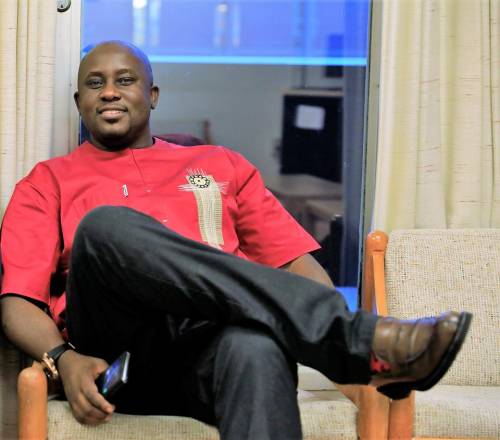COLUMN | Of frames and flexibility
By Abdulqadir M. Habeeb
There’s a quiet principle that governs the most elegant designs, the most durable systems, and the most resilient lives. It isn’t taught in schools. It hides between disciplines, shows up unannounced in conversations, and reveals itself when things stop working the way they used to.
It’s the principle of fluidity within rigid frameworks, the art of holding form and formlessness in the same hand. Not as opposites, but as partners in a cosmic dance.
You see it in well-run cities. In brilliant tactical football. In enduring architecture. In great civilizations. In the most balanced people. This is more than a philosophical idea. It is a functional blueprint.
At its heart, the principle suggests that once non-negotiables are set, everything else must remain open to tinkering. A nation might decide it will not compromise on justice, but how justice is delivered must evolve with time. A building has its beams and columns, but the spaces in between must shift with usage. A life may be built around honesty, but honesty itself must find new, gentler forms of expression as relationships deepen.
This same principle lies quietly beneath almost every great system. It is the scaffolding behind innovation, the foundation under creativity, and the hidden soul of successful leadership.
The Chinese philosopher Laozi, in the Tao Te Ching, writes:
“Water is fluid, soft, and yielding. But water will wear away rock, which is rigid and cannot yield.”
This is not an argument against strength or structure. It is an invitation to consider their limits. Without a vessel, water is formless. But without water, the vessel is empty. Together, they become useful.
In The Republic, Plato sets forth a structured society rooted in justice and order. But even there, he allows for a class of philosopher-kings—individuals who must constantly engage with changing truths, questioning and adapting, not blindly enforcing.
Modern authors like Nassim Nicholas Taleb echo this dynamic. In Antifragile, he describes systems that gain from disorder.
Not because they lack structure, but because they are built with enough flexibility to absorb shocks, shift, and grow stronger. He calls for a “barbell strategy,” one end anchored in stability, the other exploring risk. Again, structure and flow.
The ancient Stoics had their version too. Their core values: virtue, reason, duty were immovable. But their daily practice, their political involvement, their way of navigating insults, poverty, or success, was fluid. Marcus Aurelius, while governing Rome, wrote in his Meditations of a life built on internal constancy and external flexibility: “Adapt yourself to the environment in which your lot has been cast.”
Let’s come down to earth. This principle manifests clearly in competitive sports. Consider modern football, for instance. The very best teams don’t simply stick to a static formation. They operate within a tactical philosophy, a framework; but inside it, there is constant movement, recalibration, fluidity. Pep Guardiola’s Barcelona held sacred the principle of positional play and intelligent pressing, but the real brilliance lay in how players constantly rotated, how a fullback could become a midfielder or a striker drop into midfield. Jürgen Klopp, in contrast, brought the idea of heavy metal football, grounded in energy and gegenpressing, yet his Liverpool evolved over seasons, shifting formations, building patience into their game. Sir Alex Ferguson, over decades at Manchester United, mastered the art of reinvention within tradition. His teams never lost their identity of attacking ambition and mental strength, but the shapes and stars changed with time. Arsène Wenger, with his emphasis on beautiful football and youth development, also showed a willingness to experiment, especially when faced with injuries or limited budgets. In each case, the core remained, but the execution bent with the winds of time and personnel. This is the sacred balance at play.
This same principle applies to governance. Policy without principle becomes populism. Principle without adaptability becomes tyranny. The most effective public administrations are those built on clear constitutional foundations but with agile institutions that learn, iterate, and adjust. Education policy, for instance, must be rooted in equity and access. But delivery models, whether through radio, tablets, neighborhood tutors, or AI, must respond to shifting realities. Healthcare must stand on the pillars of dignity and affordability. But technology, pandemics, and population shifts must inform how it is executed.
Nigeria’s challenge, like many other nations, is not the absence of ideas. It is often the inability to separate what must remain fixed (values, vision) from what must constantly be reworked (tools, methods, partnerships). Bureaucracies that prioritize tradition over function become mausoleums. But so do startups and agencies that chase innovation without anchoring it to purpose.
The principle becomes most profound when applied to our personal lives.
Think of your values: integrity, curiosity, compassion as the foundation of a house. You don’t negotiate those. But within that house, you will repaint rooms, shift furniture, open windows that were once closed, or even break a wall to make space for something new. Your calling may evolve. Your understanding of love may deepen. Your friendships may rearrange. What remains is the architecture, the ethics and priorities you’ve chosen as non-negotiables.
The mistake is thinking that stability and flexibility are enemies. They are not. They are partners. Too much rigidity, and you shatter at the first shock. Too much fluidity, and you dissolve into chaos. It is the dance between the two that gives life rhythm.
James Clear, in his bestselling book Atomic Habits, speaks to this dance in behavior design. He writes: “You do not rise to the level of your goals. You fall to the level of your systems.” Systems here are your frameworks, fixed, repeatable habits. But within them, you experiment. You tweak. You find what works.
Even love; perhaps the most fluid of all experiences requires boundaries. Kahlil Gibran writes in The Prophet: “Let there be spaces in your togetherness, And let the winds of the heavens dance between you.” Structure and space. Solidity and air.
In a time of noise and speed, the temptation is to go all in on novelty or all in on nostalgia. To either break everything for the new or preserve everything for the old. But there’s a third way, the way of the craftsman, the gardener, the good coach, the wise leader. They set the structure, and then they tinker.
They hold the principle, and then they adapt.
They live not by rigidity, nor chaos, but by the sacred dance of form and flow.
So let this principle sit with you, quietly. As you build your home, your organization, your next idea, or your next season of life, ask: What is my framework? And where am I allowed to be fluid?
Because it is in the sacred balance of these two that beauty, durability, and wisdom are born.
Posterity shall vindicate the just.
Habeeb, a Tech, Strategy, and Innovations consultant based in Abuja. He keeps a periodic Column here and can be reached via habeebajebor@gmail.com.






